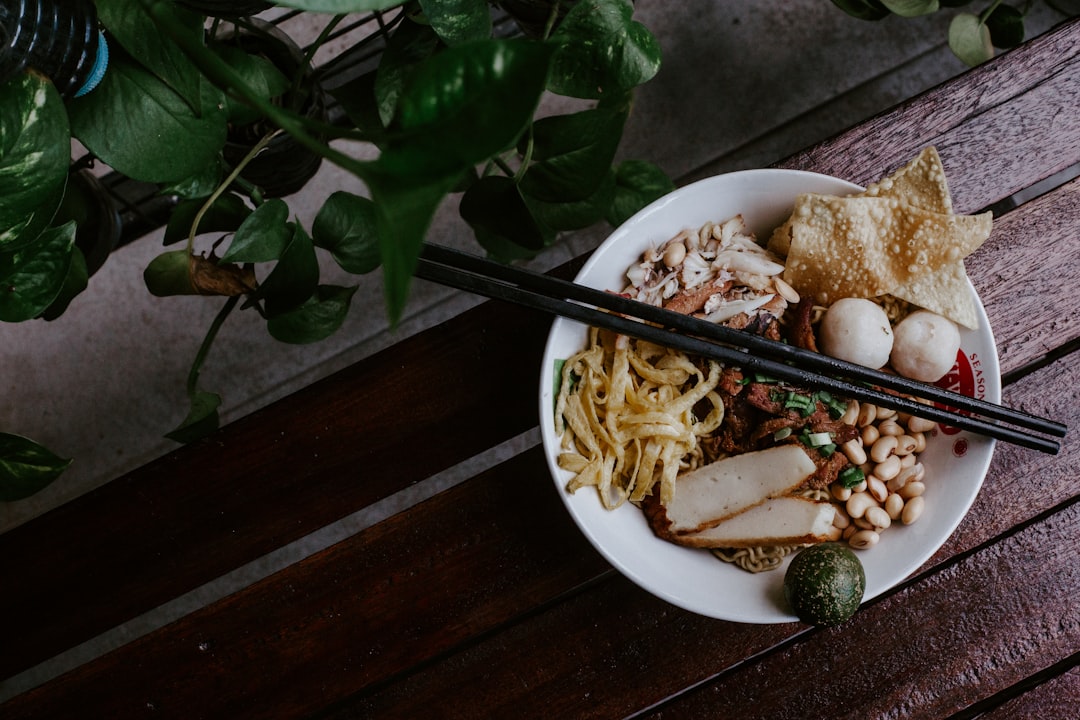Bubur ayam
In this region, bubur ayam is considered a comfort food - a bowl of bubur ayam is often seen as a cure for colds, just like a nice hot cup of tea. The silky texture of the porridge combined with the savory flavors of the ingredients makes it feel like a warm hug for the tastebuds.
The spices used in bubur ayam vary depending on the cook, which makes it easy to customize the flavor and adjust it to one's individual preferences. Variations can range from mild versions with just salt and pepper or a medley of aromatic spices such as turmeric, coriander, cumin, and lemongrass.
Although easily prepared and cooked in a single pot, bubur ayam is surprisingly difficult to make perfectly. The key is to create a proper balance of flavors - each ingredient must be cooked at the right temperature, for the right amount of time - to produce the velvety porridge that leaves one feeling nourished and comforted.
When it comes to eating bubur ayam, the ‘seasoning’ is just as important as the cooking process. Whether its some sambal, soy sauce, or a sprinkle of dried shrimp, adding condiments and toppings can enhance the flavor of the dish.
Bubur ayam is a simple yet sophisticated dish, and its ubiquity in the region testifies to its status as a classic comfort food. So next time you're in needs of a pick-me-up, why not give bubur ayam a try? Your taste buds and your soul will thank you for it.
Bubur ayam recipes
Amazing Bubur ayam recipes sourced from the web.
The origin of Bubur ayam
Ah, the beloved bubur ayam - a delectable Southeast Asian dish that many of us have come to know and love. But where, you may be wondering, did this delightful meal come from? To answer this question, we must travel back in time to discover its humble beginnings.
It is thought that bubur ayam has its roots in ancient Chinese culture, as it bears a striking resemblance to congee, a type of rice porridge that was enjoyed by the Chinese people for thousands of years. The porridge was traditionally prepared with scallions, ginger, and a variety of herbs and spices, and it is likely that bubur ayam evolved from this classic dish. It’s said that the addition of chicken and other proteins came later, when bubur ayam was brought to Indonesia and other parts of Southeast Asia.
While the exact origin of bubur ayam remains much debated, what is certain is that the dish has become an integral part of the cuisine of many Southeast Asian cultures. In Indonesia, bubur ayam is often eaten as a light breakfast, while in Singapore and Malaysia, it is a popular snack. No matter where you go, however, bubur ayam is sure to be a welcome treat.
The best thing about bubur ayam is that it can be savored in many different ways. Whether you like it plain and simple or topped with crunchy fried shallots and a poached egg, this comforting and flavorful dish is sure to please. In its various forms, it has been a source of solace and delight to many over the centuries, and its popularity shows no sign of waning anytime soon.
Types of Bubur ayam
From its origins in Indonesia, bubur ayam has become a beloved dish around the world, including many Southeast Asian countries. This creamy, hearty dish consists of chicken broth, chicken pieces, and a variety of other toppings that vary depending on the region it is served in.
In Indonesia, bubur ayam is primarily served for breakfast or brunch. Usually, it starts with a rich chicken broth that is simmered with spices like onion, garlic, lemongrass, and ginger. The broth is then laden with shredded chicken meat, boiled eggs, and fried shallots. To finish off the dish, it is served with a variety of condiments such as soy sauce, chili sauce, fried onions, and crispy wonton skins.
In Malaysia, bubur ayam is typically served with a variety of aromatic herbs and spices like coriander, turmeric, pepper, and garlic. This combination of flavors gives bubur ayam a unique flavor profile. Additionally, instead of shredded chicken meat, the Malaysian version commonly uses chunks of boiled chicken, rice cakes, and slices of hard-boiled eggs to make the dish heartier.
The Singaporean version of bubur ayam is usually made with a thicker broth, which is augmented with additional spices and coconut milk. It is typically served with hard-boiled eggs, tofu puffs, sambal chili sauce, fried onions, and spring onions.
Finally, bubur ayam is enjoyed in Thailand, where it is known as khao mok gai. This version of the dish features white rice cooked in a mixture of chicken broth and coconut milk. It is garnished with slices of chicken, chili peppers, and coriander.
No matter which variation of bubur ayam you choose, it is sure to be an energizing, flavorful start to your day! Enjoy this cozy, comforting dish in all its warm and savory glory.



